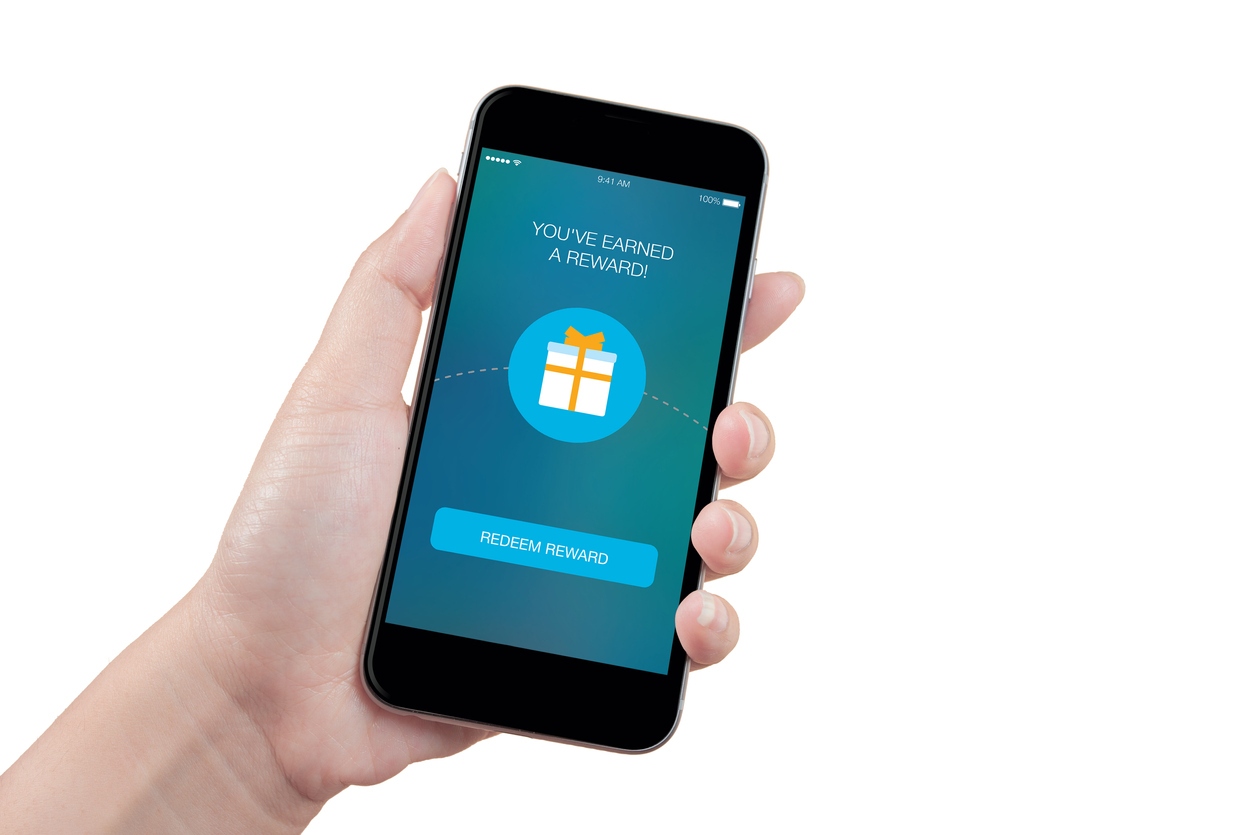Today, many users are unwilling to pay for premium content in applications. This frustrates developers who need to earn from their apps only to get just a handful of paying users. Thankfully, an offerwall presents a perfect opportunity for app makers to monetize content to all their users.
Users would be more willing to complete offers within the app if they derive a direct benefit. Savvy developers ensure that the earning potential is maximized across all user segments by mixing different offerwall strategies.
As much as it’s tempting to stick to strategies that have worked before, the ever-changing monetization landscape won’t allow it. Sample cases include the increased use of general data protection regulations (GDPRs) and the Apple crackdown on incentivized installs.
Here’s how developers can forge a way forward in light of the new realities.
What Is an Offerwall?
Offerwalls are in-app advertisements that reward users in exchange for completing specific actions. They’re widely implemented in mobile gaming on Android and iOS applications. For example, users can receive extra game coins if they reach level 12 on a game or make in-app purchases.
Offerwalls can also be used to incentivize video ad engagements and app downloads. The main idea behind an offerwall is to build user engagement and monetize non-paying users with “freemiums”. With new features added consistently, offerwalls present countless opportunities to monetize your users.
How Do They Work?
The developer embeds an offerwall into a game or application. A call-to-action on the user interface will direct users to the offerwall. For example, an “Earn Free Credits” button on a game. Launching the offerwall gives users different incentives and actions they must complete to earn them like:
- Filling a survey
- Watching a video ad
- Making an in-app purchase
Most rewards are usually given in virtual currencies or game bonuses.
Benefits of Monetizing Apps With Offerwalls
Developers can use offerwalls to enhance user engagement, increase revenues and improve the user experience. Here’s how it works:
Improve User Experience
Because users can choose when to opt-in, most offerwalls do not disrupt the flow. They enhance user experience(UX) by allowing users to access premium content without paying for it.
Increase In-App Purchases
You can use an offerwall to give non-paying users a taste of premium add-ons. They might end up paying for the features once they discover what they have been missing out on all along. You have a higher chance of conversion when users complete an offer on an offerwall.
Boost Ad Revenues
Offerwalls can be used to deliver a higher effective cost per thousand impressions (eCPM). Users interact more with ads when they’re getting something in return.

Mobile game player
Increased User Retention
Offerwalls can make users stay longer on your app. Indeed, retention rates are higher with offerwalls because users have more options to access premium content. For instance, gamers who run out of coins don’t have to exit the app. They can access more playing credits through the offerwall.
Monetize Non-Paying Users
Offerwalls create a win-win situation for everyone. Users unwilling to complete in-app purchases get their free playtime in exchange for viewing ads. Developers can still make money from non-payers by letting advertisers foot the bill.
Driving User Acceptance With Offerwalls
Offerwalls give users more reasons to interact with your app. For instance, they might love that they don’t have to leave the app if they run out of virtual currency. Different statistics prove that retention rates are higher when offerwalls are used, with app makers rewarding loyalty with enhanced offers.
Delivering Monetization With Offerwalls
Offerwall monetization drives revenue generation for app developers. It provides opt-in options for users to pay for enhanced features or complete ad-based actions for the same benefits. Because some users are unwilling to pay for the extra content, app makers can transfer the bill to advertisers.
Debunking Offerwall Myths
Offerwalls are often met with some resistance by developers because of a few misconceptions around them. We will break down some of these myths and show why they are irrelevant in modern times.
Offerwalls Will Eat Into IAP Revenues
Many developers have argued that rewarded campaigns deter users from making in-app purchases. But in reality, the reverse seems to be true. A recent study revealed that an IAP was 4.5x more likely to happen when a user engaged with rewarded ads.
Developers can use rewards to introduce users to their premium features. Many users will be motivated to spend for fear of missing out on these features. A well-executed hybrid model consisting of IAPs and reward ads would greatly improve the earnings from these apps.
Showing More Ads Leads to More Money
Relevance is one of the key elements for success when running digital ads. You can drive more user engagement by showing fewer, quality ads at the right time. Users place a premium price on scarcity and rarity. Bombarding them with the same advertising content will make it look like you’re trying to force it down their throats.
Offerwalls Don’t Attract Quality Users
An interesting argument suggests that offerwalls punish developers, only attracting users with low-engagement scores. However, this can only be true where low-quality ads were used in the first place. Better ad targeting and placement ensures that users remain positively engaged and spend more time on your app.
Offerwalls Reduce User Engagement
Some developers fear that ads will reduce user session time. But, in practice, users have been found to stay on apps for longer when ads became more engaging and interactive.
Offerwalls can include specific actions or events that the player needs to keep going. For instance, in-game credits can help them continue with premium features.
Offerwalls Are Only Effective With Game Applications
Offerwall may have been a long-time staple for game developers, but there are countless other opportunities. We can use reward ads to monetize user actions in social networks, news, shopping, and entertainment applications. A perfect example would be a shopping app that prompts the user to create an account in exchange for a discount.
Offerwalls Don’t Improve Monetization
The reality is that you can increase your revenues significantly through rewarded campaigns. Developers who exploit offerwall best practices can increase their average revenue per daily active user(ARPDAU). For instance, they can segment user groups to create deeper connections and maximize earnings from these segments.

3 people playing mobile games.
Offerwall Best Practices for Boosting Monetization
When implemented right, offerwall can boost your revenues and app engagements by significant margins. You’re going to achieve higher eCPMs if you can commit more non-paying users to the ad-based incentives. We’ll share some of the best practices for monetizing non-payers and maximizing your revenue generation.
Develop Clear Rewards
Rewarded campaigns are optional. We need to ensure that users understand what they’re expected to do and how the rewards improve their experiences. With a strong and clear call-to-action (CTA), the user knows what to expect from an ad engagement.
Some perfect examples include:
- i) Earn Free Credits! (by watching a video, for instance)
- ii) Claim Your Free Tickets Now
Ensure that users see value in the reward and are willing to engage in it. For example, you could introduce an offerwall at the toughest stage in a game. It gives users a fighting chance while allowing you to maximize earnings.
Capitalize on Timing
Positive returns rely on perfect timing. Our previous gaming example proposed sharing the offerwall at a grueling stage, where they would need it the most. From this experience, users will be motivated to make IAPs as they seek to stay on the newly-unlocked levels.
Special offerwall promotions targeting user retention can be run for limited periods. Capitalizing on limited-time-period rewards requires a deeper understanding of peak times, and it should be used sparingly to maintain interest. Weekends and holidays can be the perfect time to implement a special offerwall promotion.
Segment Your Users
Classify your users because there is no one-size-fits-all strategy for offerwall monetization. You can differentiate them according to age, buying behavior, geographic location, in-app actions, and usage frequency. You can customize the offers according to user profiles, maximizing engagements and increasing revenues.
For instance, when we separate paying and non-paying users, we can be more aggressive with reward ads for the non-payers. Developers can also implement offerwalls that engage users when they’re more likely to make a purchase. They would need to track user behavior and predict their in-app actions.
A/B Testing
A/B testing is about finding the optimal monetization strategy. Here, you’re reaping maximum revenues without cannibalizing IAPs. Split testing tools allow publishers to manipulate different metrics while measuring the increase in the conversion rate.
For example, you might want to test strategies that entice users to extend their sessions. You can then design two ads, each with customized messaging, and run them to check which one delivers the best results. You should A/B tests continually to ensure that rewards stay meaningful to all user categories.
Develop Fresh Content
Keep reviewing your offers to enhance user experiences and increase engagements. Thanks to A/B testing, you can find the perfect mix of strategies that optimize your revenues. Users will keep coming back if you’re consistently renewing your content as they look forward to more exciting offers and rewards.
Developers need to keep a close eye on rewards. They can change those that have fallen out of favor with users and add more favorable features to promising ones.
Create a Seamless Experience
Serve your reward offers in a way that creates little to no interruptions for the user. It is easy to implement this with offerwall because they’re optional, but UX should not change after opt-in. Developers should follow the original branding to make the offerwall an integral part of the application.
Here are two ways you can do it:
- Sticking to the color scheme
- Using brand logos, symbols, or art in the headers
If you want to increase retention rates and improve revenues, every transition within the app should feel natural.
Offerwalls in Action – Best Use-Cases
Offerwalls are a perfect opportunity to monetize non-paying users because they put them in control of the transaction. They have several choices to pick from, like paying for the benefits or completing an ad-based offer for the same. Here are some of the strategies commonly used to implement offerwalls:
Temporary Premium Offers
This feature temporarily unlocks premium features in an application. Users may be asked to complete a survey or watch a video ad before accessing the content. This option entices users to pay for the premium version, floating benefits like ad-free experiences, support, and enhanced pro features.
Developers can implement multiple offerwalls, setting different payouts according to the desired outcomes. For instance, they could have 1-month, 3-month, and 12-month offers, each with predetermined payouts for completed actions.
Temporary Ad-Free Offers
Unlike the temporary premium option, which unlocks several paid features, this option only allows users to go without ad interruptions. Developers opting for temporary ad-free offerwalls should look to optimize the payout value per every completed action. It lets you earn from users who otherwise wouldn’t spend any money on the app.
Timing and placement are critical when placing these offers. Placing them where they’re likely to click to remove ads prompts them to think about paying for the ad-free version. And you’d still make money if it goes either way.
Lifetime Premium Offers
This offer permanently unlocks the pro features with a one-off payment or on completion of an ad-based action. It is similar to the temporary premium option, only that this time, the users gain permanent access to the pro version. The payouts will be higher than the temporary version to account for the forgone future earnings.
This type of offerwall placement works best with non-paying return users.
Lifetime Ad-Free Offers
Unlike the lifetime premium option, this offer only provides permanent ad removal. Users make the application to stop serving ads by making a one-off payment, filling out a survey, or watching a video ad. The minimum payout should be a value that optimizes the returns for the app’s lifespan.
AppSamurai Gets the Best Out of Your Offerwalls
AppSamurai delivers innovative solutions in mobile app development. We provide a comprehensive solution covering the user journey from acquisition to retention, with real-time fraud detection tools protecting them. Get in touch to discover how you can maximize your returns while giving your users the best experience.




